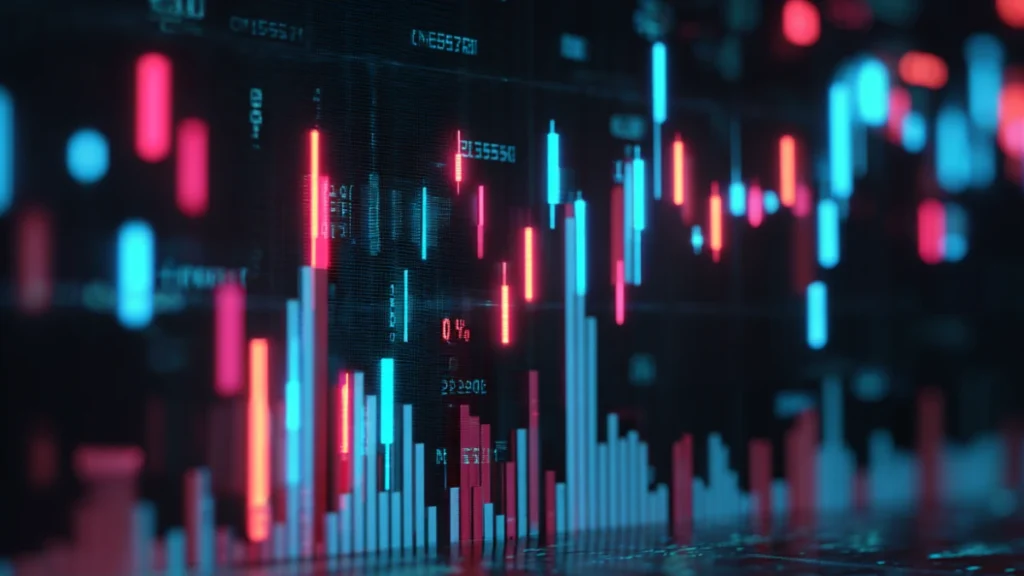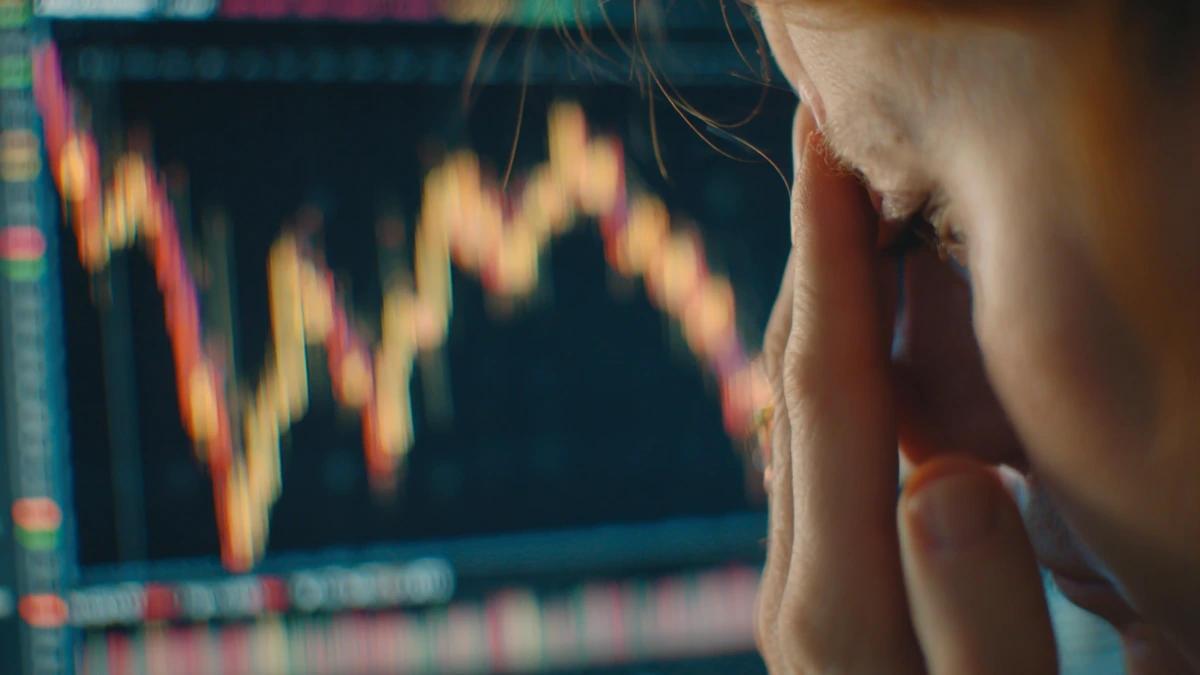Introduction: The Hidden Risk Every Trader Faces
Most traders focus on systems, strategies, and screen time. But behind the charts, a silent threat grows: trading burnout.
In 2025’s fast-moving markets — with 24/7 crypto, high volatility futures, and relentless social media pressure — even skilled traders find themselves exhausted, unfocused, or emotionally flat.
Burnout hits harder than any losing streak. It sneaks in as:
👉 Chronic fatigue
👉 Loss of motivation
👉 Emotional numbness
👉 Poor decision-making
👉 Loss of confidence
Left unchecked, burnout can wipe out accounts, careers — and even your passion for the markets.
The good news? Top traders now treat burnout like any other performance risk — and use proven recovery strategies to bounce back stronger.
In this guide, you’ll learn:
✅ What causes burnout in traders
✅ How to spot the warning signs early
✅ How top performers recover fast
✅ The best AI tools and mental resilience techniques to stay sharp in 2025 markets
Why Burnout Hits Traders So Hard (And So Often)
Burnout can affect anyone — but trading makes you especially vulnerable.
Here’s why:
- No natural “off-season”
Most professions have built-in breaks: project cycles, weekends, holidays.
But markets — especially futures, crypto, and prop firm accounts — are always moving. The temptation to trade “just one more session” leads to chronic fatigue. - Constant high-pressure decisions
Every trade demands rapid decisions with money on the line.
Even small mistakes can have outsized emotional impact — triggering self-blame, stress, and mental exhaustion. - Emotional rollercoaster of wins and losses
Profit streaks pump dopamine. Drawdowns trigger frustration, shame, and anxiety.
This constant emotional cycling burns out your nervous system — even when you think you’re handling it. - Solo work and isolation
Many traders operate alone — without the social support, feedback, or mentoring seen in traditional careers.
This isolation magnifies stress and makes it harder to regulate emotions. - Fear of missing out (FOMO) and overtrading
Social media, Discord groups, and prop firm targets often drive FOMO.
Traders push beyond their limits — taking too many trades, stretching focus, and eventually crashing mentally. - The “grind harder” trap
When performance drops, many traders think the answer is more screen time — more backtesting, more signals, more effort.
But this usually accelerates burnout rather than fixing the root cause.
👉 In short: Trading uniquely combines mental stress, isolation, and high-stakes decision-making — a perfect recipe for burnout if not managed carefully.
Top Signs You May Be Heading Toward Burnout (How to Spot It Early)
One of the biggest dangers of trading burnout is that it creeps in slowly — often hidden beneath discipline and determination.
Here are the most common early warning signs:
- Mental and emotional fatigue
• You feel drained before the session even starts
• Constant brain fog or lack of clarity
• Simple decisions feel overwhelming - Reduced focus and concentration
• You start missing obvious setups
• You second-guess entries and exits
• You “zone out” in front of the charts - Increased emotional reactions
• Bigger mood swings after wins or losses
• Increased frustration with small mistakes
• Taking losses personally — even on small size - Revenge trading or “just one more trade”
• Breaking your own rules
• Chasing losses
• Forcing trades to feel “productive” - Loss of motivation
• No excitement for the market open
• Procrastinating chart review or journaling
• Feeling detached from your trading goals - Sleep issues and physical symptoms
• Insomnia or poor quality sleep
• Increased fatigue even after rest days
• Muscle tension, headaches, digestive issues - Cynicism or negative mindset
• “The market is out to get me” thinking
• Loss of belief in your strategy
• Comparing yourself negatively to other traders
👉 The earlier you spot these signs, the faster you can recover.
If you notice even 2-3 of these in yourself — it’s time to act.
How Top Traders Recover from Burnout Fast (2025 Strategies)
Elite traders treat burnout like any other performance risk — and use structured recovery methods to bounce back quickly.
Here’s what the pros do:
- Step away from the screens — fully
✅ Take at least 3–5 full days OFF the charts
✅ No watching markets, no backtesting, no Discord scrolling
✅ Let your nervous system reset
Most traders underestimate how much cognitive load builds up over weeks of active trading. A full digital detox is the first — and fastest — way to start recovery.
- Prioritize sleep and recovery
✅ Use wearables (Oura, WHOOP, Apple Watch) to track HRV and sleep
✅ Aim for 8–9 hours per night for at least a week
✅ Let your body and mind fully recharge
Many burnout symptoms disappear after proper sleep and rest — but only if you make recovery a priority, not an afterthought.
- Rebuild mental energy before resuming trading
✅ Add active recovery: walking, light exercise, stretching
✅ Use guided meditation or AI-enhanced tools (Brain.fm, Rewire) to calm the mind
✅ Address negative self-talk with CBT or journaling
Remember — burnout is mental AND physical. Rebuild your full mental energy before jumping back in.
- Reflect on what caused the burnout
Top traders use burnout episodes as learning opportunities.
✅ Was it overtrading?
✅ Too much size too fast?
✅ Unrealistic profit targets (ex: prop firm deadlines)?
✅ FOMO from social media?
✅ Lack of routine or boundaries?
Without this reflection, the cycle often repeats.
- Set new sustainable routines
✅ Define a maximum number of trades per session
✅ Set daily screen time limits
✅ Schedule regular non-trading days (yes, on purpose)
✅ Add mental recovery practices to your week — just like backtesting or journaling
The goal is not just to recover — but to return stronger and more balanced than before.
- Use AI tools and wearables for ongoing burnout prevention
Many traders now combine:
✅ Wearable data (HRV, sleep, stress)
✅ AI-guided recovery plans
✅ Trading psychology apps (CBT, journaling)
This helps them monitor stress in real time — and catch early signs of burnout before it affects their edge.
👉 In 2025, mental resilience is as important as trading skill.
Burnout happens — but with the right strategies, you can recover fast and come back better than ever.

Best Tools to Prevent Trading Burnout in 2025
Modern traders are no longer relying on willpower alone — they’re using tech, apps, and wellness tools to stay sharp and prevent burnout.
Here are some of the most effective tools top traders are using in 2025:
AI Trading Psychology Apps
Apps like:
• Bloom (CBT app)
• Rewire Fitness
• Brain.fm (focus music)
help traders manage emotions, track stress, and maintain focus.
AI tools can spot patterns and emotional cycles you may not notice — giving you early warnings before burnout builds.
Wearable Tech (HRV + Sleep Tracking)
Devices like:
• Oura Ring
• WHOOP Band
• Apple Watch Ultra
These give you real-time data on your recovery:
• Heart Rate Variability (HRV) — key for tracking stress load
• Sleep quality — critical for mental sharpness
• Readiness scores — helping you decide when to push vs. when to rest
Many elite traders now monitor HRV daily — just like athletes do — to avoid burnout.
Professional Journaling Platforms
Using platforms like:
• Tradervue
• TradeZella
… lets you track not just your P&L — but your emotional patterns and mental state.
Journaling can reveal if:
• Poor trades happen on low-sleep days
• Certain times of day trigger bad habits
• Tilt shows up after specific market conditions
Once you know these patterns — you can adjust your routine to prevent burnout triggers.
AI-Enhanced Meditation and Focus Tools
Guided apps like:
• Headspace
• Calm
• Brain.fm
… help traders improve focus and recovery — especially during intense market periods.
Even short 10–15 minute sessions between trading blocks can help “reset” the nervous system — keeping burnout at bay.
Routine Design & Scheduling Apps
Simple tools like:
• Google Calendar
• Notion
• Sunsama
… are used by many traders to:
• Block screen time
• Schedule off-days
• Build in recovery time like an athlete’s training cycle
👉 The key is not to rely on one single tool — but to build a system:
• AI apps for awareness
• Wearables for recovery
• Journals for emotional patterns
• Routines for balance
This is how today’s top traders prevent burnout before it starts — and maintain peak performance in 2025 markets.
Final Takeaways: Building Mental Resilience for Long-Term Trading Success
Burnout is no longer something only amateur traders face — even funded traders, prop firm competitors, and six-figure P&L pros deal with it.
The difference is:
👉 Top traders recognize the signs early
👉 They treat mental resilience like part of their edge
👉 They use AI tools, wearables, and structured routines to prevent burnout — not just react to it
If you want long-term success as a trader in 2025, here’s what works:
✅ Train your mind like an athlete — recovery is part of performance
✅ Use data — HRV, sleep, emotional patterns — to guide your trading week
✅ Prioritize routines — clear boundaries between trading time and recovery
✅ Adopt AI tools — use the latest psychology apps to stay sharp
✅ Respect your limits — some of the best days to trade… are the days you decide to rest
In a market world that never sleeps, mental burnout is real — but it is also manageable.
By taking your mental game as seriously as your strategy, you’ll build the resilience to stay sharp, focused, and profitable — not just this month, but for years to come.
To dive deeper into the science of stress and recovery, many traders now rely on insights from Harvard Health’s guide on stress management. At Mastery Trader Academy, we also recommend using Tradervue to journal trades and track emotional patterns. If you’re new here, check out our in-depth article on top trading psychology books to strengthen your mindset and build resilience against burnout.


1 thought on “Trading Burnout Recovery (2025 Guide): How Top Traders Beat Stress & Stay Sharp”